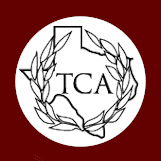Major
Features of
Roman Government
under the Republic
I. Two highest social classes
A. senate: members are magistrates, former magistrates, or descended from
magistrates
B. equites: members of wealthiest class not in the senate
II. Other class divisions
A. patricians: traditionally the highest class of Rome: originally the class
holding almost all political power (by the middle Republic the wealthiest plebeians were
virtually equal to the patricians)
B. plebeians: everybody besides the patricians (though the term was also
sometimes used to mean free persons of less wealth than the senators and equites)
C. freedmen: former slaves
D. slaves
III. Assemblies
A. comitia centuriata: divided into centuries, or groups of one hundred:
declares war, elects consuls, praetors, and censors, judges some cases
B. comitia tributa: divided into tribes: votes on legislation, elects some
magistrates, judges some cases
C. concilium plebis: made up of only plebeians (i.e., no patricians), divided
into tribes: elects tribunes of the plebs, votes on some legislation, judges some cases
D. contio: an informal assembly with no power to judge, enact legislation, or
elect anyone
IV. Principal powers and duties of Senate
A. diplomacy
B. appoints governors
C. declares war (with approval of comitia centuriata)
D. levies troops
E. public finances
F. must approve general’s request for triumph
H. sponsors religious festivals
V. Magistracies (all except censor and dictator have one-year terms)
A. cursus honorum (required progression from lowest to highest office)
1. quaestor: usually one’s first magistracy: 20 quaestors serve as
treasurers; minimum age 31
2. praetor: 8 praetors serve as judges, often become propraetors to govern
provinces after office is completed; minimum age 40
3. consul: 2 consuls are chief executives: lead armies, preside over Senate and
assemblies; often become proconsuls to govern provinces after office is completed; minimum
age 43
B. Others
1. aedile: often held between quaestorship and praetorship: four aediles oversee
games and public works
2. censor: held by senior statesman: 2 censors elected every 5 years for a 1 1/2
year term; oversee census and public works
3. dictator: appointed and given absolute power in time of emergency
4. magister equitum: assistant to dictator
5. tribune of the plebs: originally established to protect rights of plebeians
against patricians; 10 tribunes (number varies) can veto legislation and can preside over
senate
|


